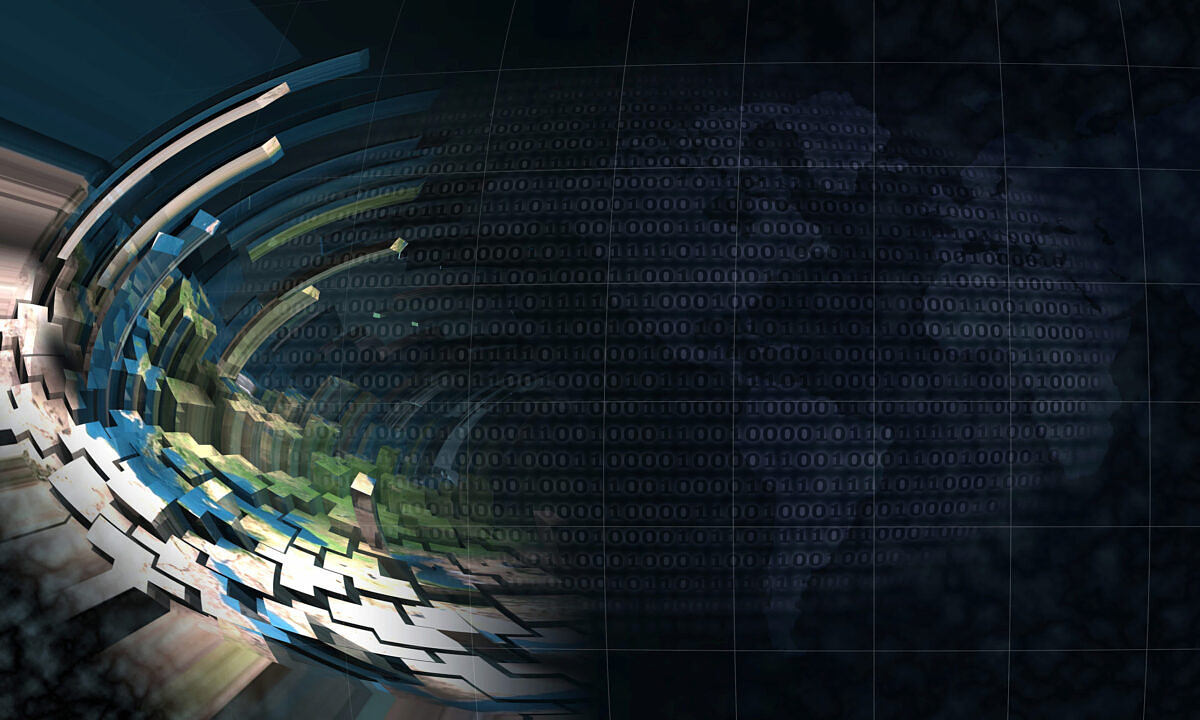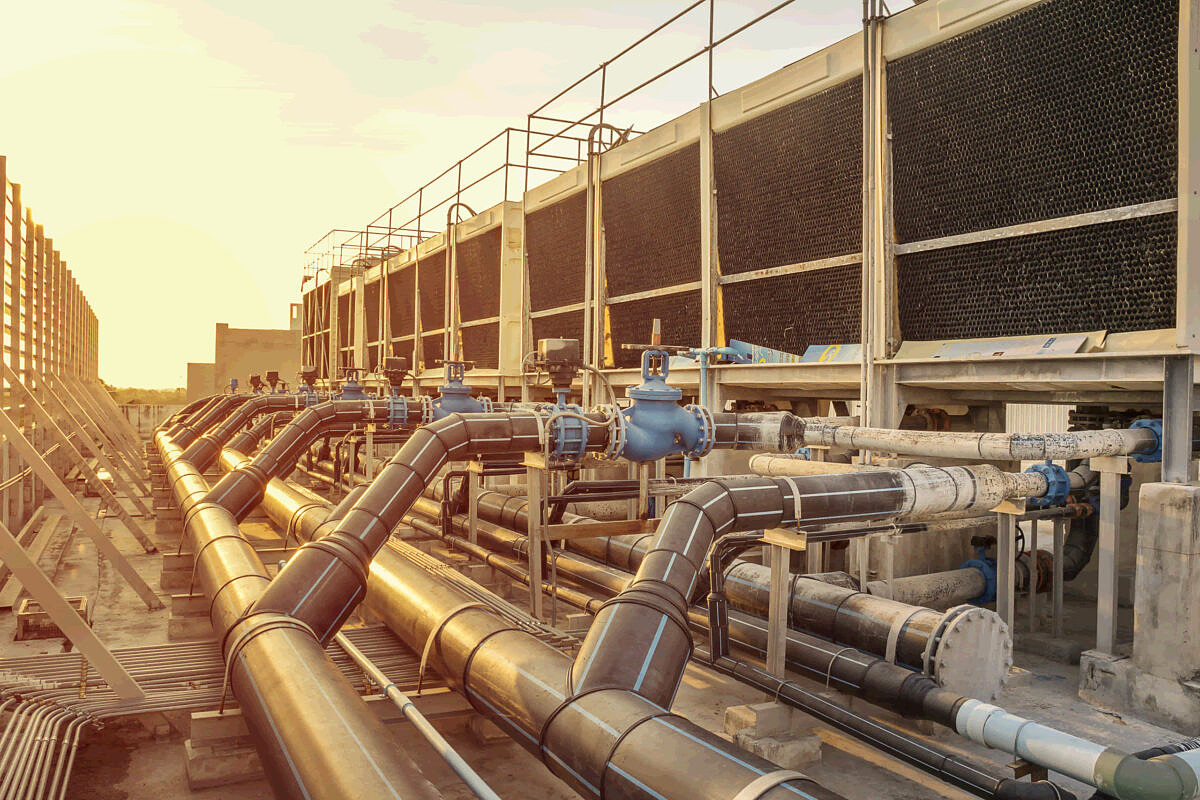The climate is overheating – time for green data centers!
Data centers are the world’s fastest-growing energy consumers. Are the digital economy and climate goals compatible? Stefan Mink from IONOS should know. We ask him: How much progress have we made in developing green data centers?

Climate goals and digitalization: transformation hand in hand?
The current level of ambition in terms of the climate and energy policies of Germany and the EU has been set in stone: by 2030, greenhouse gas emissions are to be reduced by at least 55 percent in Germany and by 40 percent across the EU as compared to 1990. Whether these goals are enough remains to be seen, but they are one thing for sure: ambitious. The fact is that “the Internet” guzzles an enormous amount of electricity and significantly contributes to greenhouse gas emissions.
The European Green Deal aims to make Europe the first climate-neutral continent. Green and digital transformation should go hand in hand. The European Commission’s paper “Shaping Europe’s Digital Future” explicitly stipulates that data centers should be climate-neutral by as early as 2030. However, that is a far cry from reality, with some studies revealing that the web infrastructure is responsible for just as many emissions as global aviation – and the trend is rising.
Demand is running hot: why are emissions so high?
The main perpetrators are servers and data centers, since increasingly large numbers of them are needed to satisfy the growing demand for computing power. Data centers are the world’s fastest-growing energy consumers. The increased data traffic and greater need for computing and storage capacity are primarily being driven by the huge growth and demand in the following four areas:
- Online streaming services
- 5G technology, IoT innovations, and increasing automation
- Cloud infrastructure
- Cryptocurrencies based on blockchains (Bitcoin)
In these digital revolution times, data fuels the global economy and data centers are the new combustion engines – and their impact on the climate is just as devastating, if not worse. It is estimated that data centers will consume approximately 20% of the world’s electricity supply in four years’ time.
The demand for computing power has increased tenfold since 2014. Data traffic is forecast to increase by the same magnitude over the next three years. So, we asked Stefan Mink, Head of TechOps Hosting (Infrastructure) at IONOS, who, among other tasks, is responsible for the operation of IONOS data centers in Europe and the USA:
As things currently stand, could the increased demand for computing power still be met?
Stefan Mink: Last year alone, our traffic at IONOS nearly doubled compared to 2019 as a result of the coronavirus pandemic. When it comes to networking, such growth can often be managed relatively quickly by setting up additional network ports. We sped up our external bandwidth to 1,500 gigabits per second in 2020, and this year will see that expansion continue. What’s more, the modern cloud platforms are basically infinitely scalable.

Bitcoin mining undermines the ideal of “green data centers”
According to the Cambridge Bitcoin Electricity Consumption Index, Bitcoin mining consumes approximately 119.87 terawatt hours of electricity a year (this value is an estimate; actual consumption ranges between 35 and 200 TWh). That is roughly equivalent to the electricity consumption of Argentina, Pakistan, or Norway. Accordingly, the Frankfurter Allgemeine Zeitung recently referred to Bitcoin as “the number one polluting currency”.
A single Bitcoin transaction more or less equates to:
According to their own reports, three-quarters of all data centers already use renewable energies. However, in China and Central Asia, the energy reserves generated by wind power and hydropower are not sufficient to ensure the production of bitcoins. The example of Bitcoin demonstrates how massively the need for computing power can increase in an incredibly short space of time and simultaneously serves as a reminder of the urgency to make serious efforts to move toward green IT and green data centers.
Demand for green IT and green data centers as an innovation driver
The upward trend in demand is set to continue unabated. In particular, IoT, automation, and 5G will enormously influence the fate of the global economy in the coming years. Data volumes and streams will surge. So, is the solution to build more data centers like before?
The answer is no. Cities like Amsterdam are already resisting the creation of new data centers because they put a strain on the local electricity grid and require a lot of cooling and energy. The future definitely does not lie in building more servers. Instead, it’s all about using the growth in demand as an innovation driver for devising intelligent solutions: existing data centers need to be optimized, with server utilization improved and cooling technologies used in a more energy-efficient way.
Increased efficiency and reduced costs are of course in the best interests of the data center operators. Sustainable IT and the idea of green data centers are also gaining momentum due to a change in behavior among big institutional investors. They and customers alike are becoming more and more insistent on sustainability as well as corporate digital and social responsibility. The calls for responsible digitalization can no longer be ignored, and the pressure being placed on operators is growing.
How can a data center work sustainably and will it ever be possible to run one in a climate-neutral way?
Stefan Mink: For a data center, I obviously need a whole lot of equipment, and CO2 is produced when manufacturing that. When it comes to operating the data center, things are different – since 2007, we have only been using electricity from renewable sources in our data centers: where possible directly from the energy supplier, at a few sites through the purchase of appropriate certificates. And in the data center itself, we conserve energy wherever we can, for example by using ultra-low-loss power units or special cooling systems. We also work together with a partner to ensure that old hardware is recycled in an environmentally friendly way.
What does “responsible digitalization” mean for IONOS?
Stefan Mink: Environmental and social responsibility is a core value at IONOS. We’re talking about corporate digital responsibility here, and as Europe’s biggest hosting provider it goes without saying that we have a key role to play. That not only includes issues such as freedom of speech, but data protection and security are also top priorities. Consequently, we scrutinize all our activities in this respect – and are also transparent about them in the Sustainability Report published by our parent company United Internet.
Hope for green data centers: which solutions are promising?
There is a wide range of problems to be solved on the path toward climate-neutral data centers. For that reason, a one-size-fits-all solution is not feasible, instead there are many different approaches and developments that could resolve one or more of these problems. The transition to sustainable IT and green data centers requires a shift in thinking and further development on a broad scale, especially in the following areas:
- Cooling systems and technology
- Data center infrastructure management (DCIM), consolidation, and condensing of data centers
- Climate neutrality in energy production
#1 Cooling systems and technology
Next-generation data centers need to be operated at a much greater power density, making an innovative air-conditioning concept and high-performance cooling technology all the more crucial, since on average, approximately a third of the energy required by a data center is attributable to the operation of cooling systems. The supply of energy is also the second-biggest cost factor in a data center after personnel and maintenance costs. Greater energy efficiency, lower CO2 emissions, and improved sustainability are thus undoubtedly also in the economic interests of operators.
Although it’s far from being the ideal solution, liquid cooling is likely to continue to prevail in the medium term. That’s because air cooling alone will not cut it, owing to the fact that the concentration of racks and servers within data centers will increase to optimize room use and capacity. At any rate, this approach minimizes the need for fans and the compact design of modern cooling equipment makes it possible to use the available space more efficiently.
Indirect free-air cooling is a relatively energy-efficient method for increasing cooling efficiency, albeit insufficient in the long term. It reduces overall energy consumption, thereby achieving a power usage effectiveness (PUE) of up to 1.15. However, that effectively means that the data center still consumes 15% more energy than the IT infrastructure on its own.
This alone is no guarantee for climate neutrality; “PUE” as a KPI isn’t a reliable benchmark for energy efficiency. Especially with regard to cooling technologies, it’s clear that we need a combination of technical innovation, best practices, carefully considered regulation, and practical certification to quickly make significant progress.

#2 New concepts in data center infrastructure management (DCIM)
In light of the emergence and prevalence of new data-intensive technologies, a higher degree of flexibility and scalability is also being demanded of data centers. To this end, operators need to implement efficient and automated data center infrastructure management that automatically measures and controls the output of the data center in a data-based manner and also adapts the cooling requirements accordingly. The formula is simple: the more accurately, reliably and flexibly such systems respond, the more efficiently a data center can be operated. Therefore, enhancing them is the key.
At the same time of course, the focus should remain on accelerating the consolidation of data centers, pooling together data center locations, and further condensing the hardware in order to further drive down the need for physical space and thus also reduce the amount of energy required. There is still massive room for improvement with regard to the following aspects:
- Server utilization
- Energy-efficient algorithms
- Multiple storage of data
- Relocation of computing load to where renewable energy is currently cheap
The hardware could also be significantly optimized in terms of:
- Extending the service life of devices
- Increasing the recycling rate of hardware
- Developing material alternatives to toxic substances and rare earths
Stefan Mink knows what changes are needed to use existing data center structures more efficiently and achieve better utilization rates:
Stefan Mink: As it happens, a core component of cloud technology has already had a substantial effect – virtualization. At the start of the 2000s, dedicated servers became popular, in other words rented computers that a customer had exclusive use of. We know though that many users only drew on a fraction of the available capacities, but a data center server obviously consumes electricity all the time. In the cloud, users now share capacities, which allows us to achieve a much better utilization rate. And this trend can still be seen today. We’re also constantly striving to find air-conditioning methods that are even more efficient.
Reducing electricity consumption, optimizing server utilization, consolidating data centers, minimizing space, acquiring more efficient cooling systems, constructing a more efficient architecture for new builds: there are countless possible adjustment factors. Where is the best place to start, and are your competitors being active enough in this respect?
Stefan Mink: The most important leverage factor is server utilization. A computer has a certain base load during operation. However, if more computing power is then needed, the electricity consumption no longer increases linearly, but rather only minimally, especially at the end. That said, we always consider every single one of these points and additionally stay on the lookout for other aspects that could help us save energy. Providers who build new data centers or replace old ones have an advantage, because they can avoid a lot of mistakes and implement the latest technologies. Ultimately, all providers experience pressure from two sides – first, the issue of sustainability plays a much greater role today in the public discourse and thus also for customers than it did 10 or even 20 years ago, and second, every watt of electricity that a data center doesn’t consume quite simply saves money.

#3 Use of residual and waste heat
Data centers are not just energy consumers. A large proportion of the supplied electrical energy is converted into thermal energy. Due to the waste energy that they produce, data centers are increasingly becoming heat generators. It’s tempting to be drawn in by the vision: since computing requirements are especially high in large cities, the heat generated there could be reused the most effectively for heating office and residential buildings or greenhouses or for supplying hot water.
The problem, however: the waste heat from data centers is not sufficient for heating purposes. This promising field requires more extensive research and technical ideas. Nonetheless, a demo project demonstrated how data center waste heat can already be used to additionally warm up fuel cells, which in turn supply whole city districts with heat. The European Commission’s paper “Shaping Europe’s Digital Future” also specifically calls for the reuse of energy.
Data centers are the fastest-growing energy consumers worldwide and will soon consume 4 to 6 percent of globally generated electricity. At the same time, they are becoming major heat generators. What’s the outlook for using this heat effectively on a large scale?
Stefan Mink: That depends on the location. If the data center directly adjoins office buildings, ideally those of the operator, it is possible to use the waste heat. However, in comparison to a traditional cogeneration plant, the power is ultimately not strong enough. Another possibility would be water cooling, which can be used to increase the temperature of the coolant, thereby making “secondary use” easier.
#4 Energy production: tackle the root of the problem or pass the buck?
Another demand made by the European Commission’s paper is the use of renewable energy sources. Of course, simply trusting that energy production will be completely climate-neutral by the deadline is naive and far from adequate. However, climate-neutral and sustainable energy recovery is essential to achieving completely climate-neutral operation of data centers and thus green data centers.
Hydropower is already proving to be the dominant energy source used for operating Scandinavian data centers. German operators such as IONOS also switched to hydroelectricity a while ago and currently source their electricity entirely from hydropower plants, with Naturstrom AG acting as the supplier. However, it is also important to pay attention to where the electricity is generated. If German data centers buy green electricity in Sweden and consequently force Swedish operators to use nuclear power instead, nobody will benefit.
At the same time, the performance capacity of solar and wind energy is substantially increasing. Solar energy in particular is certainly credited with having the potential to also cover the energy requirements of a green data center in the long term using local energy production. The potential of other alternatives, such as hydrogen fuel cells, is still difficult to determine, although they are already being discussed as an alternative to diesel generators used for emergency power supply.
Could solar and wind energy or potentially hydrogen fuel cells also be an option, at least for emergency power supply purposes?
Stefan Mink: We generally take all developments into account. At the moment, wind power is the most readily available source in terms of where our data centers are located. We’re currently building a new data center in the UK, and we’re even installing solar cells on the roof of it for the very first time. The topic of fuel cells as a replacement for emergency power systems is an exciting one that we’re observing with a great level of interest.
How are you planning to reduce your carbon footprint even further over the next 10 years?
Stefan Mink: Optimize, optimize, optimize. In 2019, we introduced an ISO 50001 energy management system for continuously measuring and improving our energy consumption. We’re testing new cooling methods and taking a modular approach when planning new data centers. What’s more, we are implementing a climate assessment for the entire company in order to really identify all the hotspots that are contributing to emissions.
If you don’t want to miss any other exciting topics, then subscribe to our content newsletter now and stay up to date.





